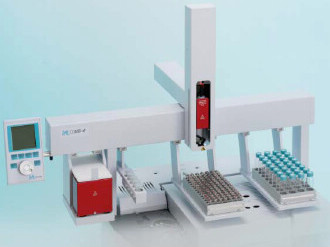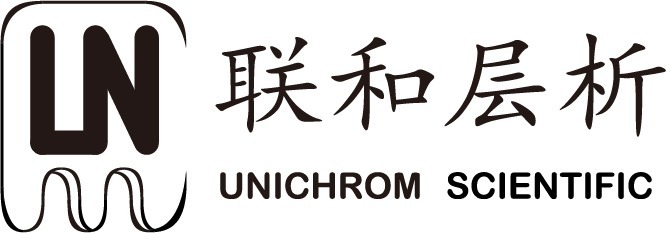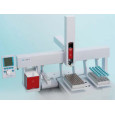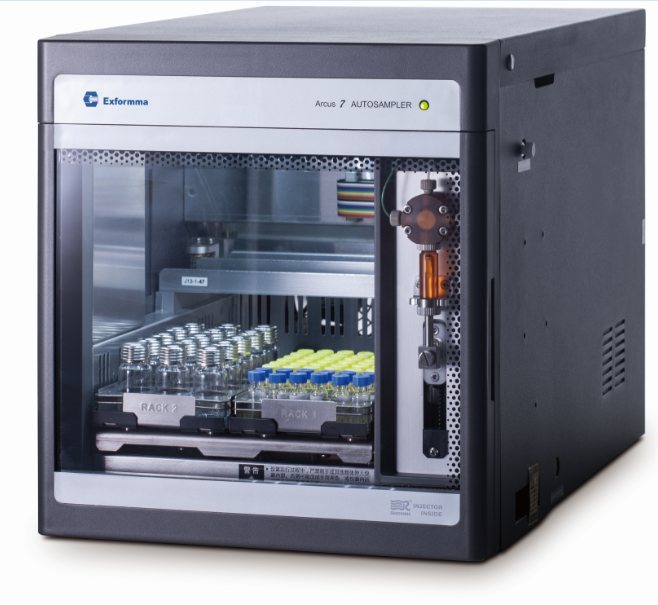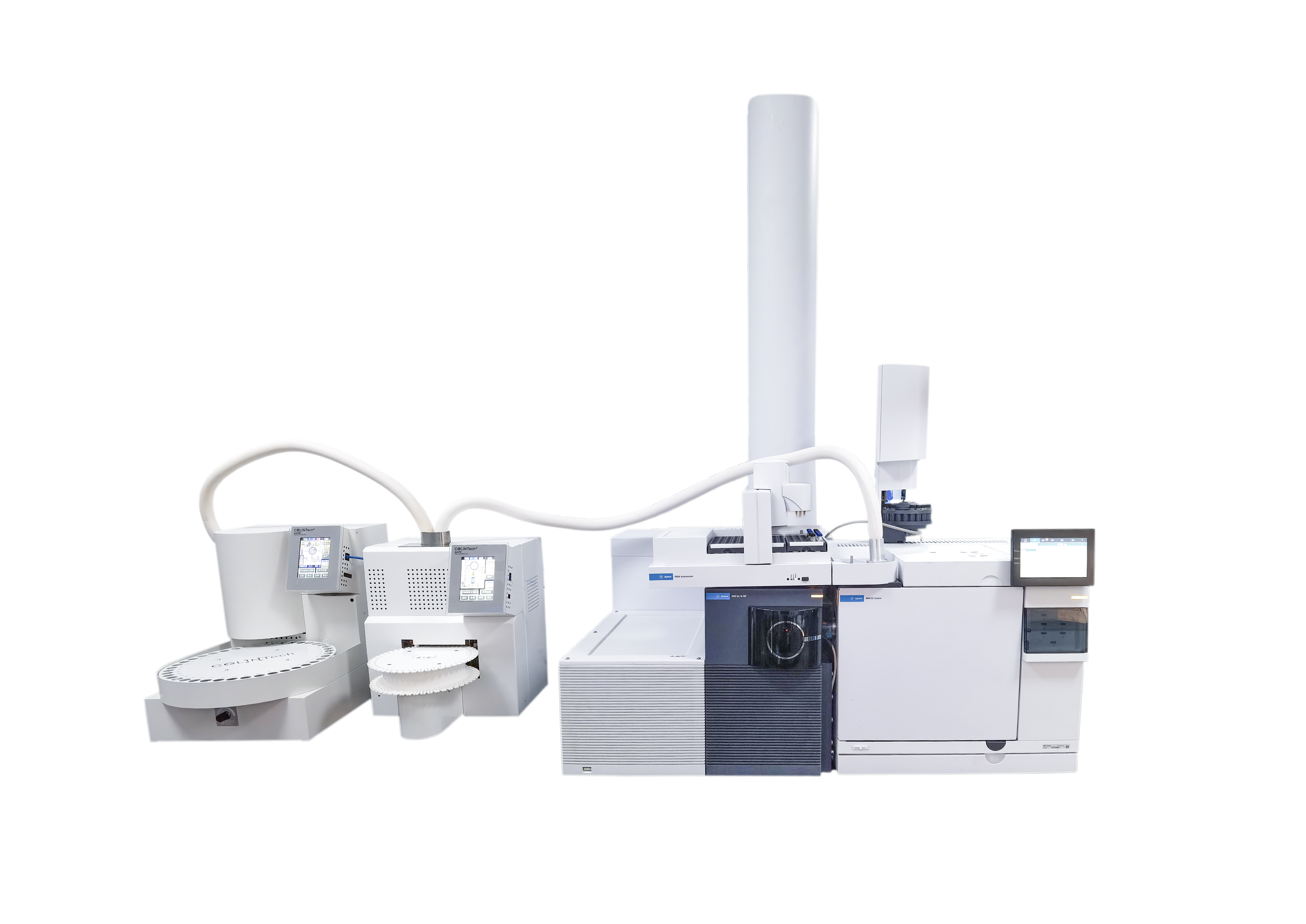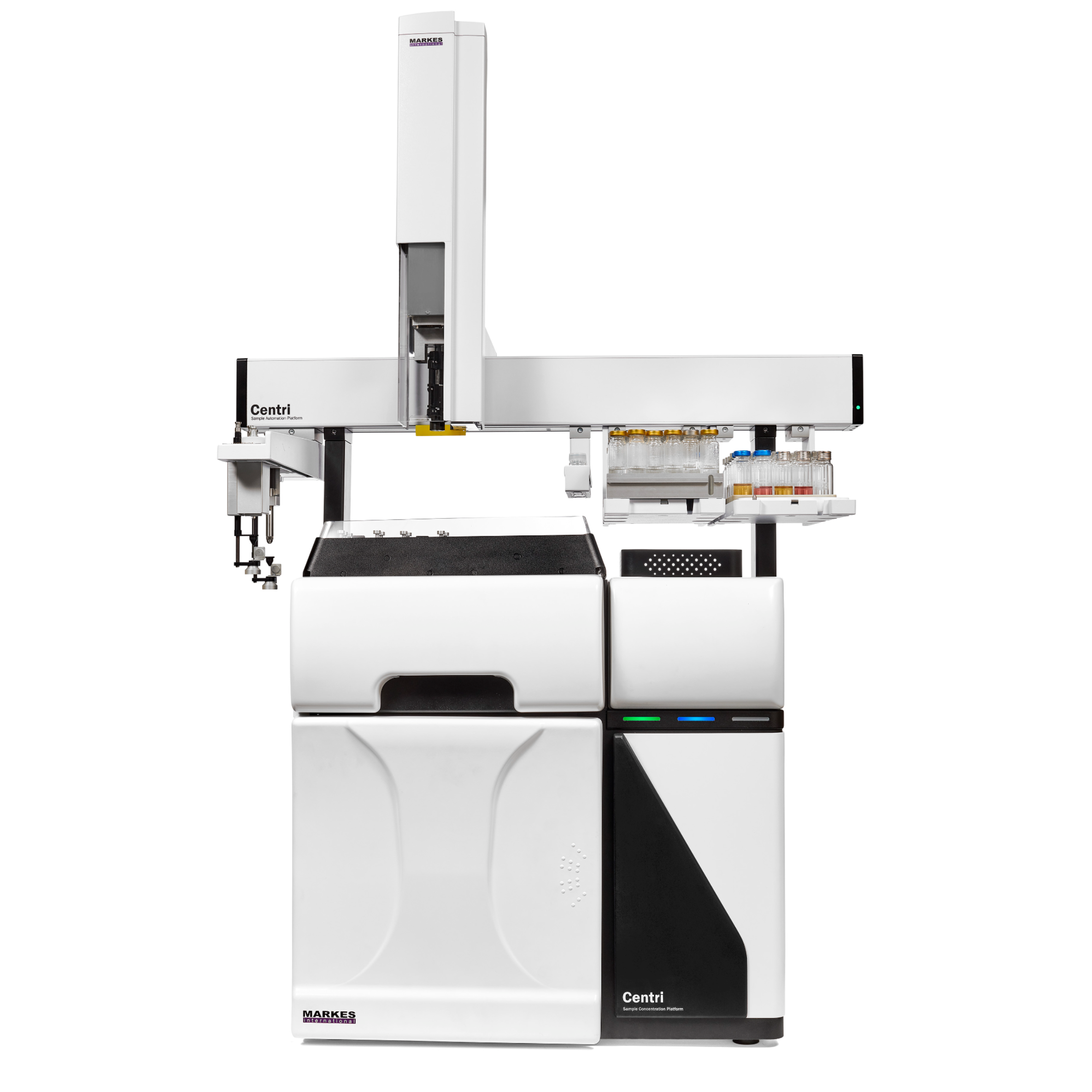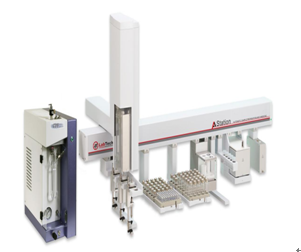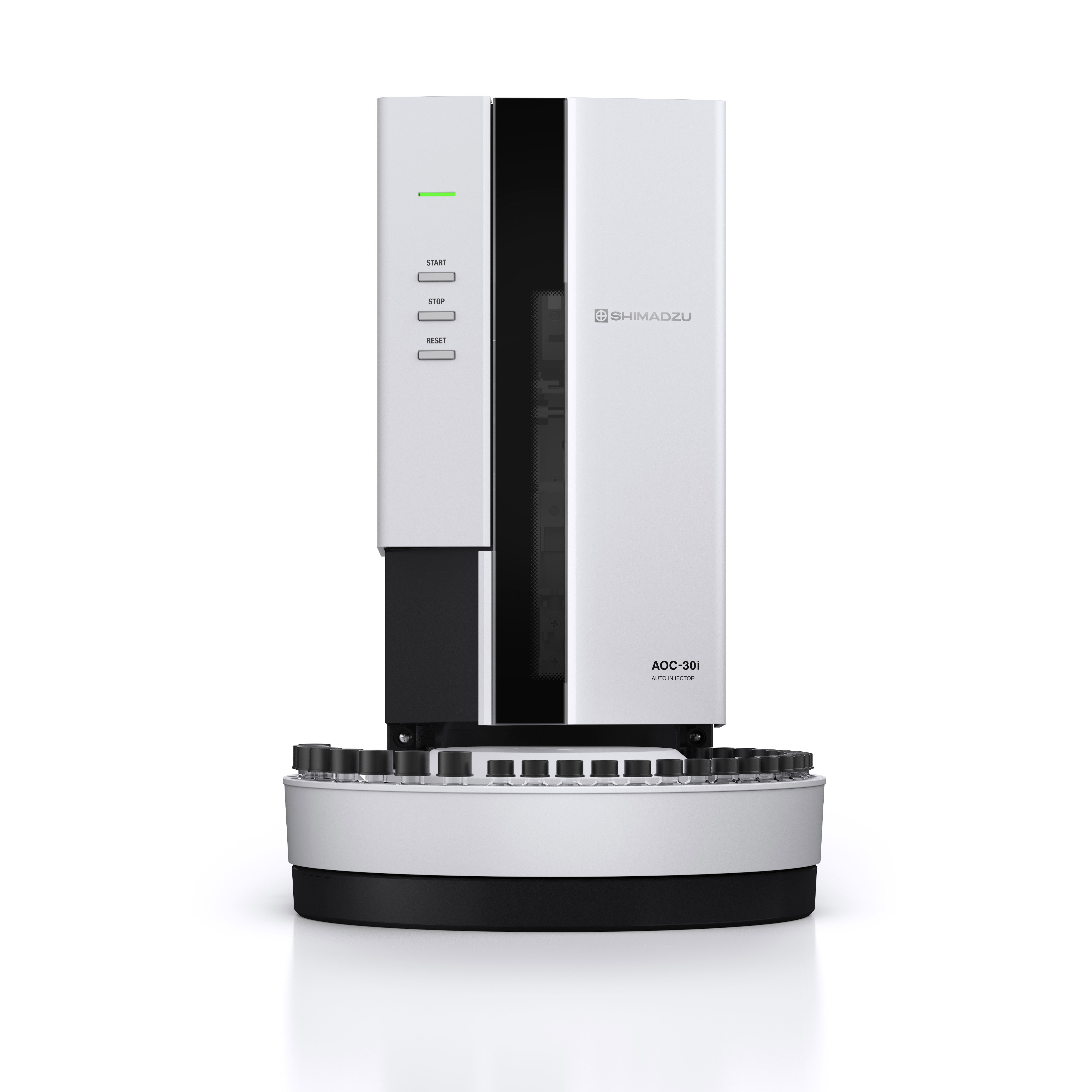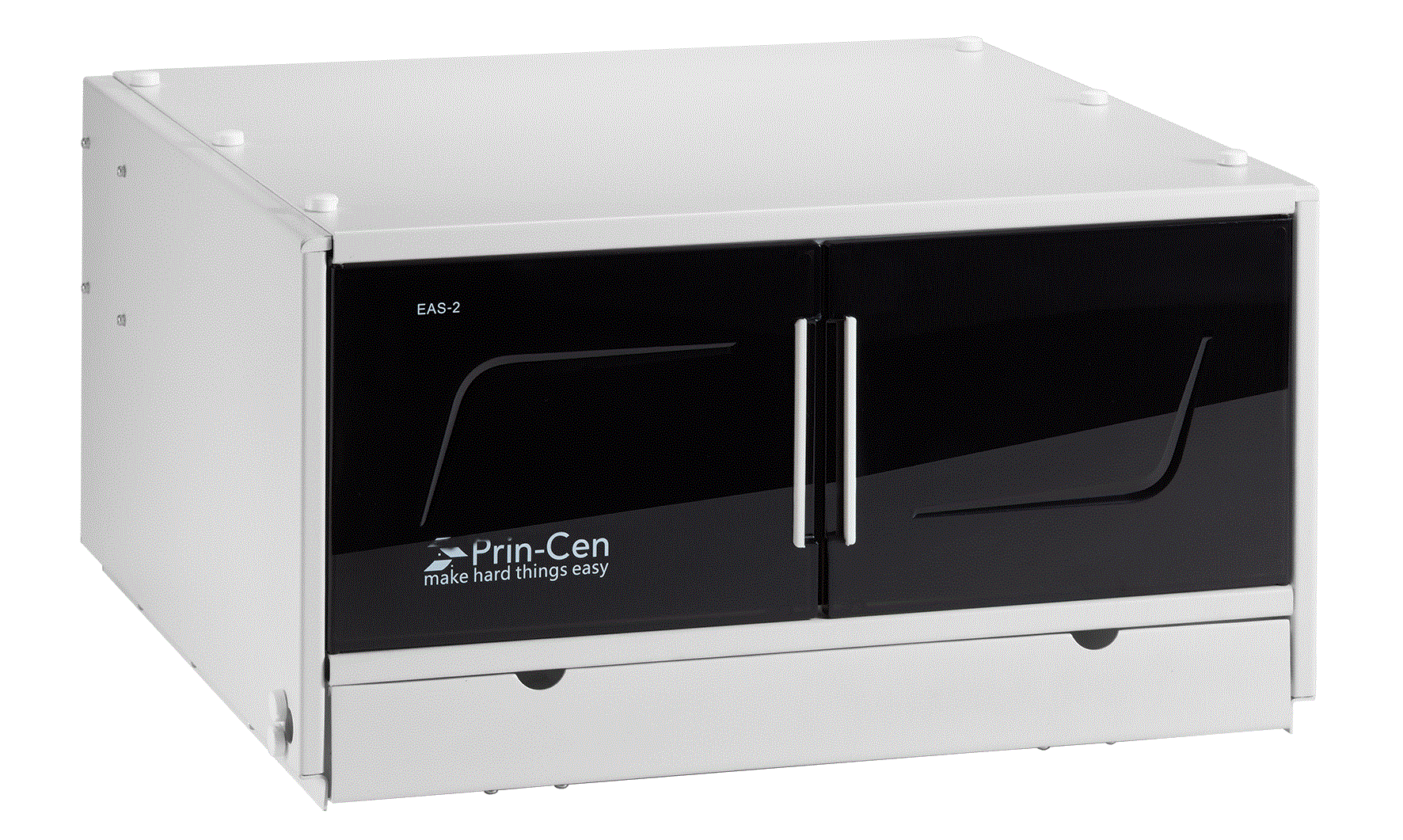方案详情
文
A series of volatile organic compounds (VOCs) in drinking water are determined using In-Tube Extraction comprehensive GC/time-of-flight mass spectrometry (ITEX GCxGC/TOF-MS). A method for determining these compounds has been established and detection limits for a selected number of VOCs are depicted. Detection limits were below 20 ng/L for all compounds. A comparison with ‘classical’ Purge & Trap GC/MS is made. Repeatablility experiments revealed an RSD of less than 20% for all the compounds, well within the demands of the Flemish decree on drinking water
方案详情

Determination of Volatile Organic Compounds in Drinkingand Surface Water with In-Tube-Extraction comprehensiveGC/time-of-flight mass spectrometry P.E.M.D. Joos , G.M.A.De Beuckeleer1, S. De Koning 1 Antwerpse Waterwerken, Mechelsesteenweg 111, B-2840 Rumst, Belgium2 Leco Instrumente GmbH, Marie-Bernays-Ring 31, D-41199 Monchengladbach,Germany ABSTRACT: A series of volatile organic compounds (VOCs) in drinking water are determinedusing In-Tube Extraction comprehensive GC/time-of-flight mass spectrometry (ITEXGCxGC/TOF-MS). A method for determining these compounds has been establishedand detection limits for a selected number of VOCs are depicted. Detection limits werebelow 20 ng/L for all compounds. A comparison with ‘classical' Purge & Trap GC/MS ismade.Repeatablility experiments revealed an RSD of less than 20% for all thecompounds, well within the demands of the Flemish decree on drinking water. INTRODUCTION AND DISCUSSION: Antwerpse Waterwerken (AWW) is one of the largest drinking water companies inthe Benelux, producing yearly 160 million m3 of drinking water. Therefore, the dailycontrol of both drinking water and surface water (out of which the drinking water isproduced) is an important task. Several parameters are determined under theinternational standard ISO 17025 in order to keep the quality as high as possible. Oneof these parameters are the compounds, mentioned in EPA 524.2, i.e. a series ofvolatile organic compounds. These compounds are giving a serious threat to human safety.Hence, measuringof a series of VOCs (benzene,1,2-dichloorethane, tetrachloroethene, trichloroethene,bromodichloromethane and the total concentrations of trihalomethanes andtrichlorobenzenes) is demanded by the Flemish government in a decree of 2003.In thisdecree detection limits are mentioned which have to be reached by the controllinglaboratory and are typically 10% of the norm value. Therefore, demanded detectionlimits are usually above 1 pg/L and do not pose any problem to most analysis methods.However, for 1,2-dichloroethane, being one of the more “difficult”VOCs to analyze, thedetection limit should be below 0.3 pg/Lin drinking water. Presently, VOCs in drinking water are measured using two methods: Purge & TrapGC/MS and Headspace GC/MS. The former method is sensitive, but has a number oflarge drawbacks (e.g. memory effects), while the latter is at least ten times lesssensitive. By CTC Analytics a new technique has been introduced, namely In-TubeExtraction Sample Preparation (ITEXQ). The principle of this technique is showed inFigure 1. This method gives both easiness to use and sensitivity. EXPERIMENTAL: ITEX (in combination with CTC Combi Pal): >Extraction speed: 100 pL/s > Total pumping strokes: 50 x1mL > Temperature Pumping Syringe/sample incubation: 60℃ (10 min) > Desorption: 200℃ (15 s; splitless) Comprehensive GC (Agilent 6890 / Leco modulator) > 1st column: HP-5ms SV (30 m; 250 pm id; 0.5pm) > 2nd column: VF-17ms (2m; 100 um id; 0.2 um) > Carrier gas: helium > Injector temperature: 250°℃ > 1st oven temperature program: 40°℃ (2min) to 200°℃ at 4°C/min > 2nd oven temperature is 5°℃ offset from 1st oven temperature > Transferline temperature: 250°℃ >Modulation time: 5.5 s Mass spectrometry (Leco Pegasus 4D TOF) > Mass range: 45-300 amu >Acquisition rate: 100 spectra/s > Detector voltage: 1750V > lon source temperature: 200°℃ Figure 1: Working principle of ITEXQ Another problem, which is often encountered, is the occurrence of interferences.Hence, wrong assignments can occur which gives a serious reduction in the quality ofthe measurement. High chromatographic resolution,as obtained by comprehensiveGC/time-of-flight mass spectrometry does give a solution to this problem.Moreover,lower detection limits can be obtained. Using these conditions extremely low detectionlimits were obtained (see Table 1). A comparison is made with Purge & Trap GC/iontrap mass spectrometry. Repeatability experiments revealed RSDs of less than 20%,as can be seen in Table 1. A typical chromatogram of a 0.2 pg/L is depicted in Figure 2. RESULTS: Table 1: Quality parameters for a selected number of VOCs Compound Repeatability Recovery LOD ITEX LOD P&T (%) (%) (ng/L) (ng/L) Chloroform 9.1 103 2.6 40 1,2-dichloroethane 11.6 109 3.0 46 1,3-dichloro-trans-propene 8.7 91 2.8 54 Chlorobenzene 4.9 116 1.0 42 1,2,3-trichloropropane 4.5 96 2.0 33 Butylbenzene 10.1 106 2.5 58 1,2-dibromo-3-chloropropane 9.8 91 9.7 80 Naphtalene 12.1 89 1.4 57 Figure 2: 3D-plot of a mixture of VOCs (concentration: 0.2 ug/L)
确定
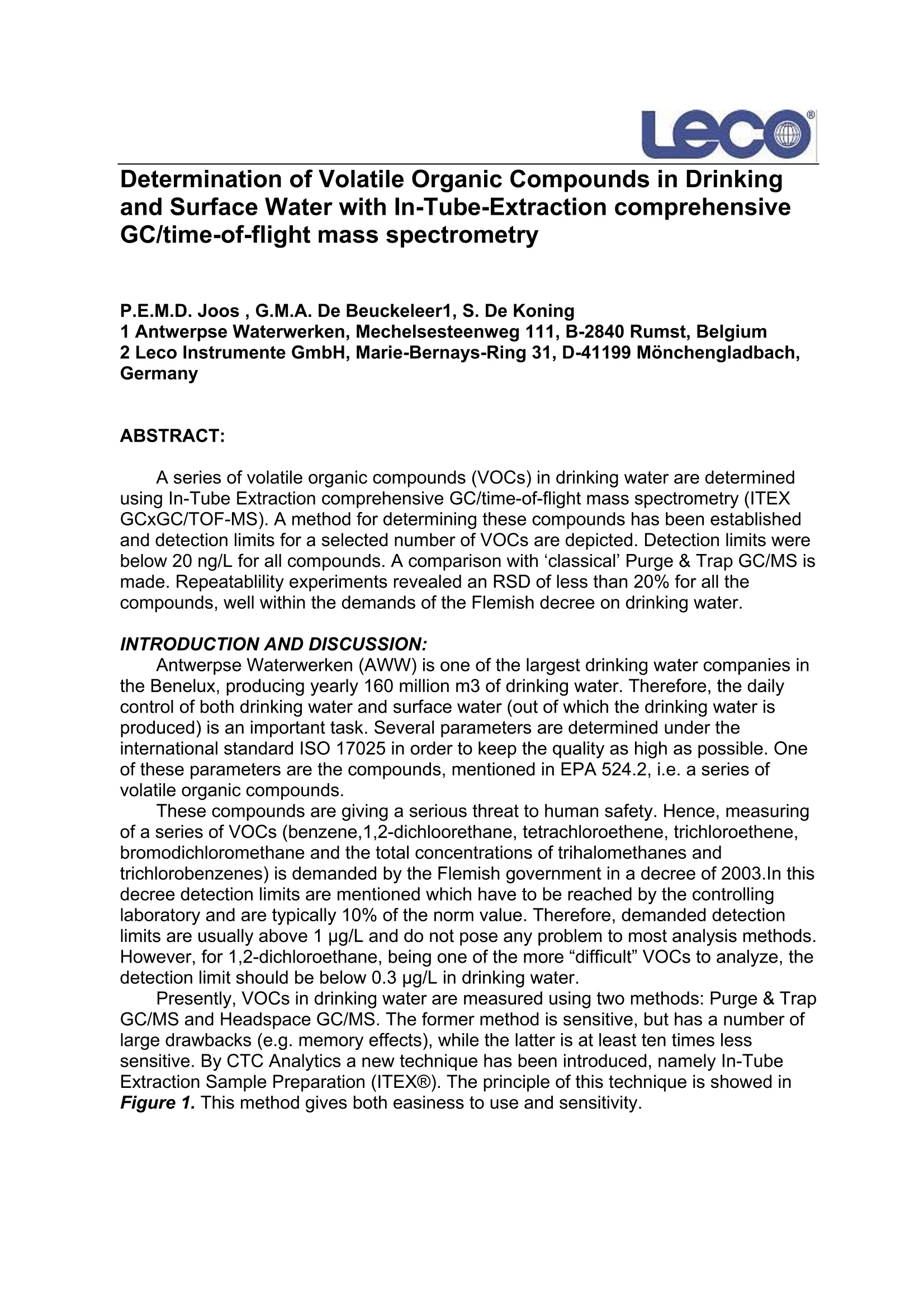
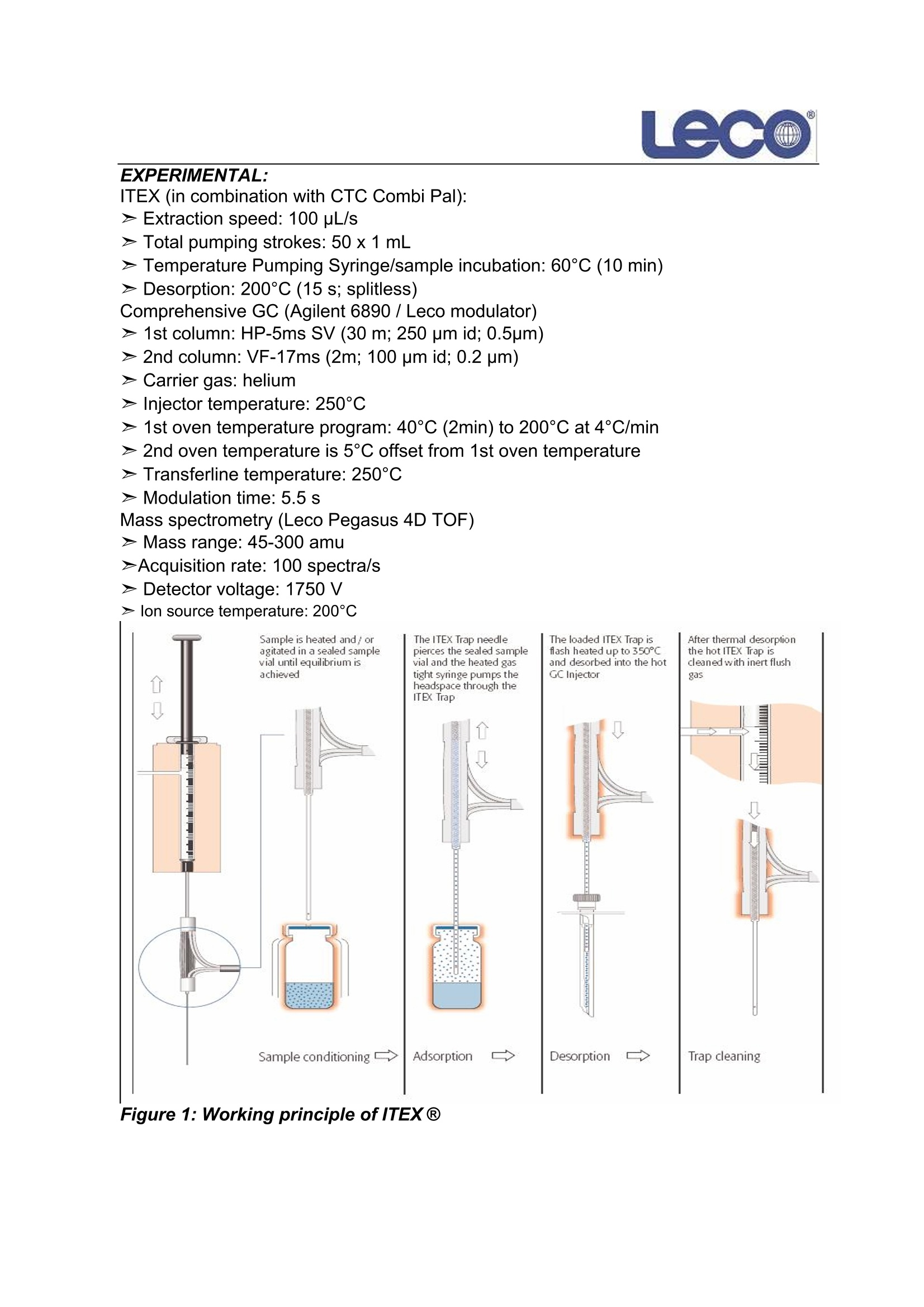
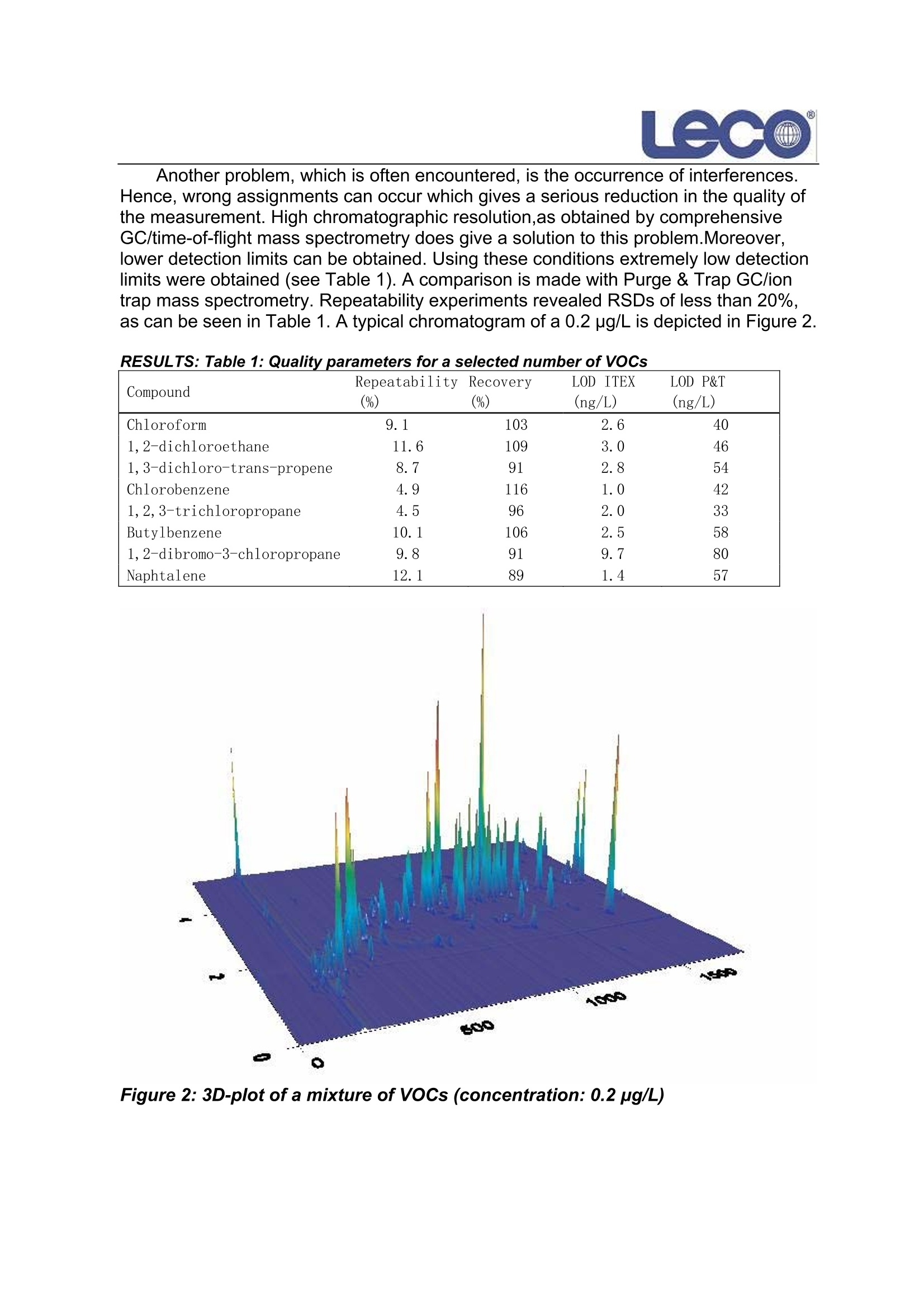
还剩1页未读,是否继续阅读?
联和层析贸易(上海)有限公司为您提供《饮用水中VOCs检测方案(自动进样器)》,该方案主要用于饮用水中有机污染物 检测,参考标准--,《饮用水中VOCs检测方案(自动进样器)》用到的仪器有瑞士CTC多功能进样器 Combi-PAL 液体/顶空/固相微萃取/ITEX
推荐专场

